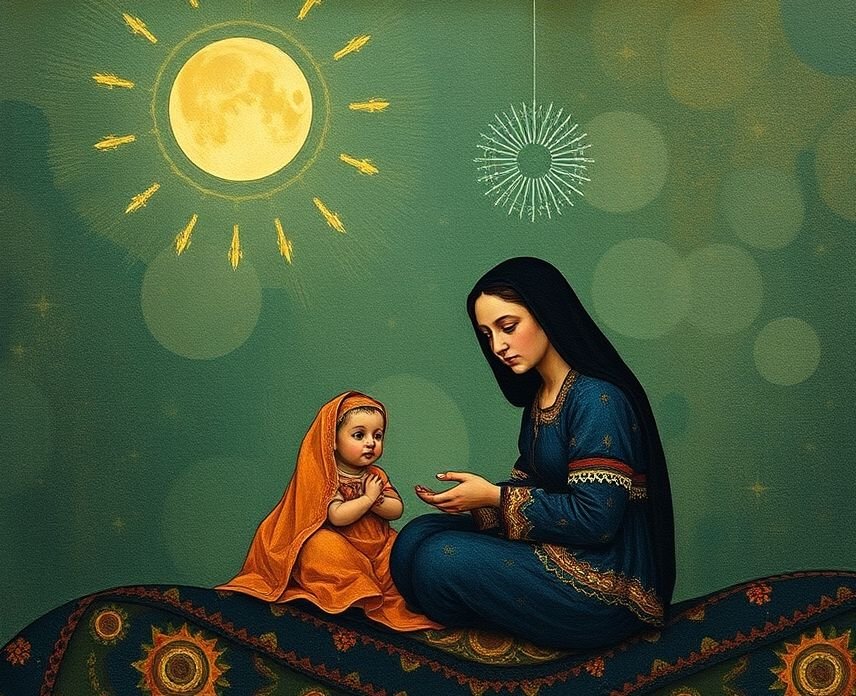Nativität A Timeless Exploration of Birth, Meaning, and Cultural Identity
The story of birth is as old as humanity itself. Every society, culture, and religion has sought to explain or celebrate beginnings—whether through sacred myths of creation, dynastic genealogies of rulers, or the miracle of a newborn child entering the world. Birth is more than a biological event; it is the foundation of families, communities, dynasties, and even entire civilizations.
Among the many words that encapsulate this profound idea, the German term “Nativität” occupies a unique and symbolic position.
Etymology and Origins of “Nativität”
Linguistic Roots
“Nativität” originates from the Latin nativitas, meaning birth or origin, which itself derives from nasci—“to be born.” In Roman culture, the term was not limited to human birth but also encompassed the beginnings of nations, cities, and even celestial events.
As Christianity spread through Europe, nativitas took on theological significance, referring specifically to the birth of Jesus Christ—the Nativity. In German-speaking regions, the term evolved into Nativität, embedding itself in religious, cultural, and academic traditions.
Early Religious Meanings
In its earliest usage, Nativität was almost entirely sacred. It signified holy or divine births, most notably the birth of Christ. Medieval chronicles also employed the term when referring to dynastic foundations or rulers believed to be divinely chosen. Coronation rituals often invoked the ruler’s “nativity,” symbolizing their sacred legitimacy.
Semantic Evolution
By the Renaissance and Enlightenment, Nativität expanded beyond theology. Scholars began applying it to discussions about human origins, population studies, and the beginnings of languages or cultures. In modern German, while the term still retains religious undertones, it is also used across fields such as sociology, linguistics, literature, and demographics.
Historical Context of Nativität
Ancient Civilizations
Long before Christian theology, civilizations revered birth as a divine or cosmic event:
- Egypt: Pharaohs were depicted as sons of gods, with their nativity recorded as sacred acts.
- Mesopotamia: Myths of deities such as Tammuz symbolized fertility cycles and renewal.
- Greece & Rome: The legendary births of Heracles or Romulus and Remus highlighted divine intervention and destiny.
These narratives laid the cultural foundation that later allowed Christian notions of Nativität to resonate so powerfully.
Early Christianity
The Gospels of Matthew and Luke canonized the Nativity of Christ, anchoring it as a central element of Christian doctrine. By the 4th century, Christmas celebrations institutionalized the Nativity story, with churches in Bethlehem and Rome becoming centers of devotion and pilgrimage.
Middle Ages & Renaissance
During the Middle Ages, nativity plays brought the story of Christ’s birth to villages and cathedrals, fostering both devotion and cultural memory. Artistic traditions flourished: illuminated manuscripts, frescoes, and altarpieces all celebrated the Nativity. The Renaissance elevated these depictions into masterpieces—Giotto’s frescoes, Botticelli’s symbolism, and Caravaggio’s dramatic chiaroscuro made the Nativity a timeless subject.
Enlightenment to Modern Era
The Enlightenment broadened the term’s reach. While Christian traditions continued to celebrate the sacred Nativity, intellectuals began using Nativität in demographic studies, philosophical debates, and early social sciences. In modern times, the term remains both spiritual and secular, appearing in theology, statistics, literature, and even political discourse.
Nativität in Religion and Art
Christian Theology
Within Christianity, Nativität signifies the Incarnation—the moment when God entered human history through Christ’s birth. It carries symbolic meanings such as:
- Humility: Christ born in a manger.
- Divine Love: God sharing in human existence.
- Prophecy Fulfilled: Linking Old Testament promises with New Testament realization.
Nativity in Art
Art has long used the Nativity as inspiration:
- Medieval Era: Stained glass windows, manuscripts, and cathedral sculptures.
- Renaissance: Giotto, Botticelli, and Caravaggio elevated the subject with realism and symbolism.
- Baroque & Romanticism: Grandeur, emotion, and drama reflected the mystery of divine birth.
- Modern & Contemporary: Films, photography, and installations reinterpret the Nativity for new audiences.
Cross-Religious and Mythological Dimensions
Though strongly linked to Christianity, the motif of sacred birth is a universal archetype:
- Hinduism: Krishna’s miraculous birth celebrated with festivals and devotion.
- Egyptian Religion: Horus, son of Isis, seen as a divine savior.
- Buddhism: Legends describe the Buddha’s extraordinary birth, symbolizing his unique destiny.
Such parallels reveal that Nativität resonates far beyond its Christian usage—it represents a timeless human fascination with beginnings, hope, and renewal.
Nativität in Demography and Social Sciences
In modern sciences, Nativität has a more technical meaning: the birth rate of a population.
Applications
Governments and institutions track Nativität to shape policies and allocate resources, influencing:
- Healthcare systems
- Education planning
- Pension structures
- Workforce development
Contemporary Demographic Issues
- Europe & East Asia: Declining birth rates and aging populations spark debates on immigration and family policy.
- Africa & South Asia: High birth rates fuel economic growth but also create resource pressures.
- Migration: Balances demographic gaps where native populations shrink.
Case Studies:
- Germany: The niedrige Nativität (low birth rate) has influenced immigration policies.
- France & Scandinavia: Generous child benefits and parental leave programs aim to increase fertility rates.
Linguistics, Identity, and Culture
Native Language and Belonging
In linguistics, Nativität ties to the concept of being a “native speaker.” Language nativity shapes cultural belonging, identity, and even social opportunity.
Globalized Debates
As multilingualism grows, defining what it means to be “native” becomes more complex. Is it birthplace, first language, or lived cultural immersion?
Literary Symbolism
Writers often use nativity as a metaphor for rebirth, exile, or the quest for home—reminding us that beginnings are not just historical but deeply personal.
Symbolism of Nativität
- Universal Renewal: Every birth, whether of a child, an idea, or a nation, represents continuity and hope.
- Creativity: Artists and inventors describe new works as “births” of creation.
- Personal Transformation: Spiritual rebirth, psychological healing, and fresh starts echo the symbolism of nativity.
Celebrations of Nativität
Christian Traditions
- Midnight Mass and Christmas carols such as Stille Nacht.
- German customs: Advent calendars, Christmas markets, and nativity displays (Krippen).
Global Cultural Variations
- Mexico: Las Posadas, reenacting Mary and Joseph’s search for shelter.
- Philippines: Simbang Gabi, a series of night prayers before Christmas.
- Spain & Italy: Elaborate nativity scenes enriched with local cultural elements.
Modern Relevance of Nativität
Artistic and Cultural Reinterpretations
Today, the Nativity inspires not only churches but also contemporary art, theatre, and film, reimagining its message for modern societies.
Sociological Impact
Birth rates and demographic shifts fuel debates about immigration, identity, and national futures—showing that Nativität remains politically and socially relevant.
Interdisciplinary Uses
- Psychology: Metaphors of personal rebirth in therapy.
- Technology: Expressions like “the birth of AI” or “the nativity of new industries” reflect its symbolic power.
The Global Influence and Future of Nativität
Birth is a universal human experience, and Nativität continues to serve as a lens through which we understand origins—whether of people, cultures, or ideas. As globalization reshapes societies, the concept remains vital for interfaith dialogue, demographic policies, and cultural creativity.
Conclusion
Nativität is more than a German word for “birth.” It is a bridge between theology, history, art, culture, and modern sciences. From sacred celebrations of Christ’s birth to demographic debates on falling fertility rates, from Renaissance masterpieces to contemporary poetry, it encapsulates humanity’s timeless fascination with beginnings.
Ultimately, Nativität reminds us that every birth—literal or symbolic—carries the potential to reshape lives, societies, and even the future of humanity. It is both a mirror of our past and a compass for renewal in the present and beyond.





